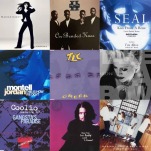Nolan’s most renowned puzzle-box movies are Inception, The Prestige, and Memento, but he started down this road early, with his 1998 debut feature Following. Jeremy Theobald plays a young writer who makes a habit of shadowing strangers around London, looking for fodder for his work. Then he meets Alex Haw, a dapper burglar who offers to show Theobald how to read people by breaking into their houses and rifling through their belongings. As with Memento, Nolan jumbles the chronology of Following, introducing some elements of Theobald’s story—a change in appearance, a physical injury, a romance with gang moll Lucy Russell—before doubling back to fill in the gaps. In an interview on Criterion’s new Following Blu-ray, Nolan says that the structure of the movie was partly an attempt to compensate for the technical limitations of an ultra-low-budget shoot, allowing him to start Following with a clear-sounding, crisp-looking scene while still teasing the audience with the more exciting (but less polished) action yet to come. But the leaping back and forth also keeps viewers guessing about how the pieces are going to fall together.
Following is an audacious debut film, but a rough one. The acting is fine, but never rises about the level of tough-guy posturing; and while the dialogue is pleasingly punchy, it’s derivative of film noir and old gangster pictures. Still, Following has an attractively grainy black-and-white look, and is peppered with lively conversations about how and why people behave the way they do. Plus, it contains startling connections to Nolan’s later work, from the Batman sticker on the door of Theobald’s flat to the name of Haw’s character, “Cobb” (the same as Leonardo DiCaprio’s in Inception). Mostly, Following is distinctly a Nolan film in the way the protagonist and antagonist keep explaining the rules of their little cat-and-mouse game to the viewer, announcing openly what their creator is doing with all his narrative sleight-of-hand and genre play. Following is about the engines that drive all stories—picking a person to follow, becoming fascinated by an object, etc.—but it’s also a vehicle for Nolan to tell audiences that he’s messing with them and still spring surprises. “You take it away, you show them what they had,” Haw says to Theobald about his philosophical justification for taking other people’s stuff. That line pretty well sums up why Nolan is so in love with non-linear storytelling, which gives him the power to destroy and restore at his own command.
Key features: A non-revelatory chronological re-edit of Following, Nolan’s disturbing short film Doodlebug, and a typically muted and analytical Nolan commentary track and interview.









































